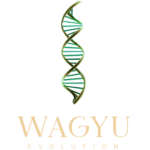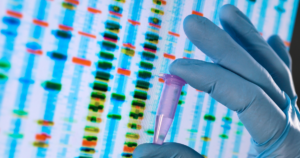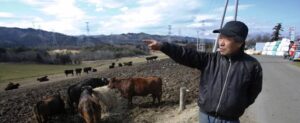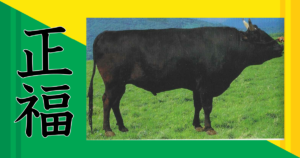Proper Handling and Storage of Semen for Artificial Insemination
Table of Contents
Artificial insemination (AI) is a pivotal technique in cattle breeding, driving reproductive efficiency and genetic progress. Despite being first used on dogs in the late 1700s, AI remains indispensable, offering advantages such as disease control and genetic enhancement. Recent innovations, including timed insemination and sexed semen, continue to refine AI practices, enhancing both efficiency and profitability. So proper handling of Semen for AI is pivotal for breeding success
Semen Collection
Semen collection via Artificial Vagina (AV) Fig 1. involves three people: one handling a teaser animal, one controlling the bull, and one collecting semen. Safety and hygiene measures are crucial, including using a non-slip surface and regular hoof care for bulls. A steer is commonly used as a teaser to minimize disease risks. The AV stimulates ejaculation with careful temperature control and lubrication. Safety precautions, such as nose rings for control and protective gear for collectors, are essential due to bulls’ size and potential danger. Successful collection requires training bulls to use the AV and attention to detail.
Animal Artificial Insemination semen Preparation
To ensure safety and viability before storage of the semen sample, the following steps are needed to be conducted:
1. Semen collection and evaluation
After collection, sperm count, mobility, and shape determine its quality. Advanced testing might be done to verify quality.
2. Adding Energy
Sugars and proteins fuel sperm. This keeps sperm active, especially when semen is kept long.
One ejaculate can inseminate several times by diluting semen. Adding nutrients and protection to sperm is also done.
3. Semen Antimicrobial Protection
Antibiotics inhibit hazardous microorganisms from growing. However, antibiotic resistance is developing. Therefore, alternate techniques are being considered.
4. Adjusting Volume
The type of insemination and the size of the animal determines the volume of semen used during insemination.
5. Buffering
Using PH buffers provides sperm with the pH they need to stay alive.
6. Membrane Protection
Semen contains lipids and proteins to preserve sperm membranes during storage and insemination. Special freezing through liquid nitrogen to preserve the viability of sperm. These treatments keep semen viable and effective for artificial insemination, aiding animal breeding efforts.
Semen Handling
Most bull semen is frozen in 0.25 or 0.50 cc French straws and preserved at −196°C in liquid nitrogen. Straws help package, label, store, and transport semen and manage freezing and thawing, which improves sperm recovery. One drawback of straws is their susceptibility to mistreatment, especially the 0.25 cc ones often used in Europe and Canada. The 0.25 ml straws feature a higher surface-to-volume ratio than the 0.5 ml straws, making them more susceptible to temperature changes.
Seidel (2011) suggests a maximum of 3 seconds for transporting 0.25 ml straws between liquid nitrogen tanks to thaw flasks without harming sperm. Rapid thawing reduces water recrystallization and rehydration, reducing sperm membrane and cytoplasm damage. The ideal temperature range for ice crystal formation is between -50°C and 0°C. The fast advancement in this temperature zone causes semen to transition from glassy to liquid, preventing ice crystal formation. Various research has investigated the optimal thawing rate for maximizing viable sperm post-thaw (Correa et al., 1996). Some research suggests that freezing sperm at 60°C to 80°C for 6-7 seconds can enhance motility and viability (Lyashenko, 2015). However, the time of exposure to high temperatures is crucial, with minimal room for mistakes compared to thawing straws at lower temperatures.
Based on Literature and Saacke (1974), the following broad guidelines can be derived:
- Label liquid nitrogen storage tank straw canisters.
- Maintain an accurate inventory of semen straws, bull codes, and their locations in the liquid nitrogen tank.
- Avoid over raising the canister and place straws below the frost level. Before searching again, place the canister in liquid nitrogen if no semen straw is discovered within 10 seconds.
- Use forceps to extract the straw, remove excess liquid nitrogen, and soak it in water at 35°C for 45-60 seconds. Thaw only enough straws for inoculation within 10 minutes. Avoid direct contact between straws when thawing numerous straws.
- In chilly weather, warm the AI pistol before loading. Stroke the pistol vigorously with a clean paper towel, position it near your body for a few minutes, or use an AI gun warming device.
- Put the straw in the AI cannon with the cotton plug end first after drying. Cut the straw 7mm below the crimped end.
- Secure the AI sheath over the loaded weapon.
- If inseminating after 10–15 seconds, cover the loaded pistol in a towel or gun warmer for hygienic and thermal protection.
- Safeguard loaded AI weapons against sunlight, elevation, and high temperatures over 35°C.
- Clean the cow’s vulva with a paper towel before insemination.
Conclusion
Artificial insemination (AI) remains a vital tool in modern cattle breeding, offering benefits such as disease control and genetic enhancement. Recent innovations like timed insemination and sexed semen have further enhanced its efficiency and profitability. Proper semen handling is crucial for success, requiring meticulous collection and storage techniques. These practices contribute to improving herd genetics and reproductive efficiency in cattle breeding operations.
References
Correa JR, Rodriguez MC, Patterson DJ and Zavos PM 1996. Thawing and processing of cryopreserved bovine spermatozoa at various temperatures and their effects on sperm viability, osmotic shock and sperm membrane functional integrity. Theriogenology 46, 413–420.
Lyashenko A 2015. Effect of different thawing procedures on the quality and fertility of bull spermatozoa. Asian Pacific Journal of Reproduction 41, 17–21.
Saacke RG, Vinson WE, O’Connor ML, Chandler JE, Mullins J and Amann RP. 1980. The relationship of semen quality and fertility: A heterospermic study. In Proceedings National Association of Animal Breeders 8th Technical Conference Artificial Insemination and Reproduction, Columbia, Missouri, USA, pp. 71–78.
Seidel GE 2011. Profitable uses of sex-sorted semen. In Proceedings Applied Reproductive Strategies in Beef Cattle. Joplin Missouri, USA, pp. 349–352
Semen Collection from Bulls. (n.d.). http://www.vivo.colostate.edu/hbooks/pathphys/reprod/semeneval/bull.html
Noakes, D. E., Parkinson, T. J., & England, G. C. W. (Eds.). (2019). Veterinary reproduction and obstetrics (10th ed.).



